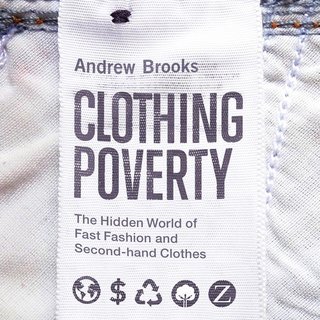When Andrew Brooks appeared on This Day Live to discuss his book Clothing Poverty: The Hidden World of Fast Fashion and Second-Hand Clothes, his comments revealed a lot about the unknowns of a universal experience: shopping for fashion. While shoppers are usually out to find the most flattering clothes at the best possible price, what they often don’t realize is that they’re supporting an industry that can prey on some of the most vulnerable populations in the world.
The heartache and struggles of workers in the fashion industry may get some press from time to time, but the negative publicity doesn’t always result in real change. There’s also the effects of climate change to consider, as the clothing on shelves and racks today requires plenty of energy to produce. Andrew Brooks looks at how this drags the world down and what people can do if they want to become a more responsible consumer.
The Importance of Fashion
No matter where people live or what culture they embrace, fashion is something that connects us all. You don’t need to be rich to develop a personal taste, nor do you need to strut the streets of Paris or London to show it off. To learn more about how to have an stylish wardrobe, read these top tips on how to match your watch to your suit.
Andrew Brooks says that it’s important to know where exactly our clothes are coming from, which might be more difficult than it seems. For instance, you might look at a label on a pair of jeans that says Made in China. This seems pretty straightforward, but those three words tell very little of the full story. Every thread of fabric in that piece of clothing came from somewhere, and it may not have been China.
In other words, just because the item was put together in China, doesn’t mean that the rest of the supply chain was located in the same country. From the design to the screen printing services to the advertising to the countless loops of cotton, the scope of the jeans could be far wider than a single place. The rivets, zippers, and accessories on the jeans are a much more involved tale about how many people had to come together before the item could officially be put up for sale.
The Price of Cotton
Sweatshops are by no means a secret, and Andrew Brooks knew before starting his book that the public did have some idea of what clothing poverty looks like. Having been brought to light in the 1990s, sweatshop reports revealed not only the tragic circumstances but also the people who were forced to work in such conditions. Depending on who was running the operation and where, child labor was an unfortunate reality for many.
In the book, Andrew Brooks calls attention to the more modern details of fashion, how different pieces are assembled, and who suffers most. He talks about a steadily declining price of cotton, which has put enormous strain on farmers and their families. The professionals in these industries aren’t always asking for very much, and yet they still have a difficult time getting what they need to support themselves and their loved ones.
The Dangers of Fast Fashion
In the past, the fashion industry functioned largely on a seasonal system. When the weather changed, the stores would display a collection that reflected the most current temperatures. While certain items would disappear faster than others, the idea is that people would largely see the same things if they visited during at least a couple of months of the year. This has largely fallen by the wayside though. Today, instead of shopping for a few quality pieces that would hold up for years, we’ve seen the rise of fast fashion.
The concept refers to a near-constant turnover of clothes, driven largely by consumer demand for having ever-evolving pieces to choose from. For instance, a celebrity might wear a very specific design or color, and fast fashion designers would work to replicate the look for an affordable price and then have it in the marketplace as quickly as possible. Both the environment and the employees have been crushed under the turnover.
What You Can Do
Author Andrew Brooks recommends being more aware of where your clothes come from. While he didn’t call out any company names specifically, he did say that there were resources that could reveal more about what you were buying and how it came into existence. He says that, as a general rule, you don’t want to buy the least expensive items for sale. However, he also warns that purchasing the most expensive items in no way guarantees that you are making an ethical choice. Unfortunately, all kinds of companies are known to exploit their position in the market — and this includes those that are at the top of the price bracket. In addition, using recycled materials like coastal and marine recycled plastic textiles in creating clothes can help solve the global shortage of resources.
